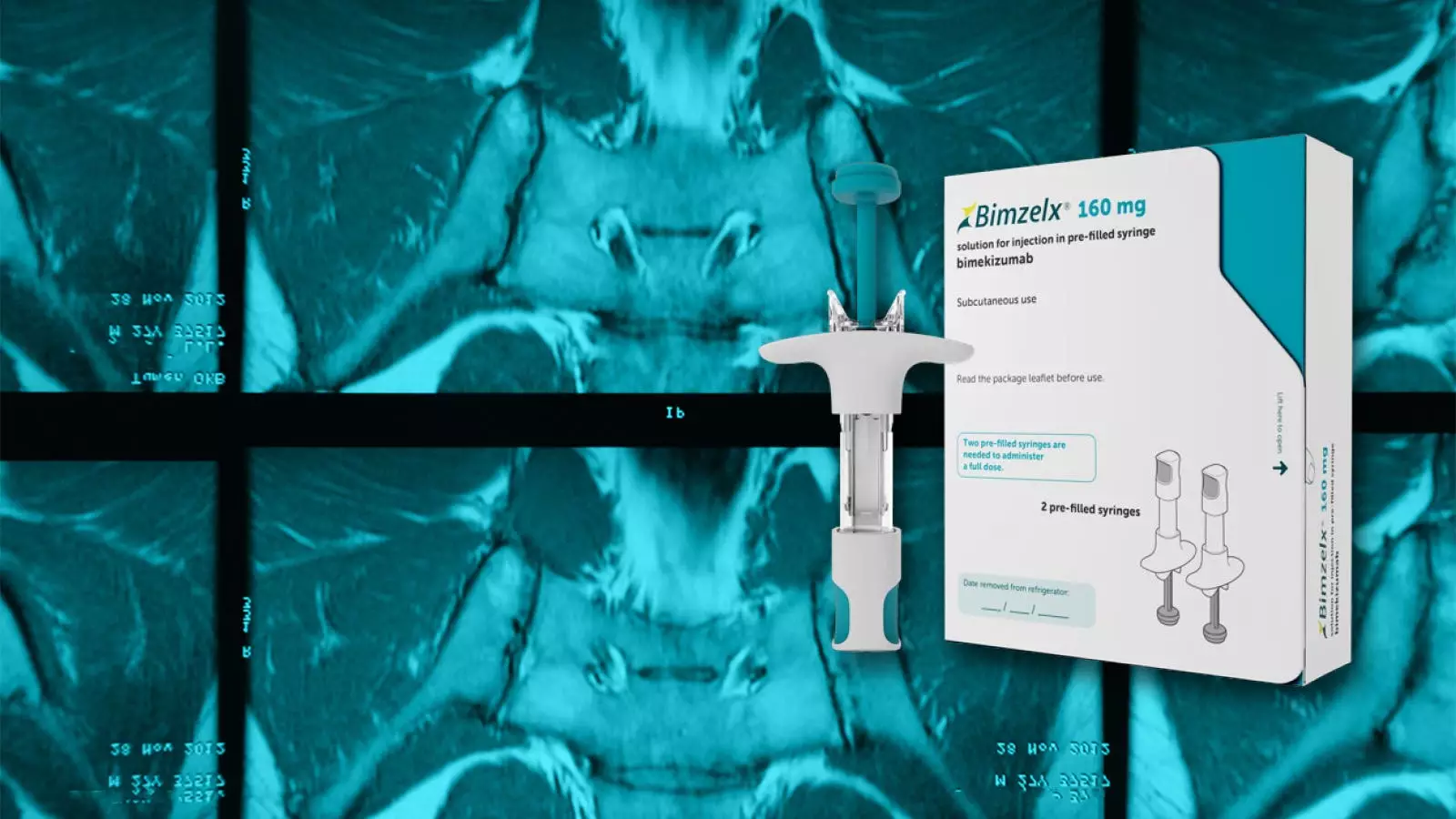Axial spondyloarthritis (axSpA) is a debilitating autoimmune disease that affects many individuals around the world. Researchers have now reported the full 52-week results from the two parallel phase III trials of the interleukin-17 (IL-17) blocker bimekizumab in axSpA, revealing strong efficacy. However, the future of this promising drug in the U.S. market is uncertain. This article explores the efficacy of bimekizumab and the obstacles it faces in reaching the market.
Xenofon Baraliakos, MD, PhD, and colleagues conducted the trials, evaluating the efficacy of bimekizumab in patients with axSpA. The primary efficacy endpoint was improvement of at least 40% in Assessment of SpondyloArthritis International Society ratings (ASAS40) after 1 year of continuous treatment. Remarkably, more than 60% of patients achieved this response, classifying them as responders to bimekizumab.
The study results also indicated that patients initially randomized to placebo but switched to the active drug after week 16 achieved nearly identical responses by week 52. Moreover, for some subgroups, response rates continued to climb during the subsequent 28 weeks, with no declines in response rates observed. This highlights the sustained efficacy of bimekizumab in the long term.
Unique Targeting of IL-17 Subspecies
Bimekizumab distinguishes itself from other biologics by targeting both IL-17A and IL-17F, the two IL-17 subspecies. While IL-17A is considered more biologically active, IL-17F is enriched in the skin and synovial tissue of patients with spondyloarthritis, making it an attractive secondary target for drug therapy.
This distinguishes bimekizumab from biologics like secukinumab (Cosentyx), which only inhibit IL-17A. The unique dual targeting mechanism of bimekizumab gives it the potential to be more effective in treating axSpA patients.
The promising results of bimekizumab have sparked interest in the medical community, but challenges in reaching the U.S. market remain. The drug’s developer, UCB Pharma, initially sought marketing authorization for plaque psoriasis. While bimekizumab has gained approvals in numerous countries worldwide, the FDA delayed approval after identifying manufacturing issues at UCB’s plant in Belgium.
UCB had hoped to resolve these issues swiftly but recently announced that the timeline for resolution is still uncertain, despite a successful re-inspection in April. This uncertainty casts doubts on when or whether bimekizumab will enter the U.S. market.
Study Details and Patient Profile
The two phase III trials, called BE MOBILE 1 and BE MOBILE 2, enrolled approximately 600 patients with axSpA. BE MOBILE 1 enrolled patients with clinical axSpA, lacking clear imaging evidence of the disease. BE MOBILE 2 enrolled patients with radiographic axSpA. The participants were randomized to receive bimekizumab or placebo, without any other background medications.
The treatment lasted for 16 weeks, and patients were evaluated for primary and secondary endpoints. Following this, an open-label extension study was conducted, where patients on bimekizumab continued the treatment while placebo groups were switched to the active drug.
The patient profile of the study showed an average age of about 40, with a predominance of men. Roughly 15% had previously used tumor necrosis factor (TNF) inhibitors. Disease activity ratings at baseline were significant, with patients averaging 3.7 on the Ankylosing Spondylitis Disease Activity Score (ASDAS) and approximately 6.6 on the Bath Ankylosing Spondylitis Disease Activity Index (BASDAI).
Promising Safety Profile
During the 52-week study, adverse events were recorded and evaluated in terms of safety. The study revealed that adverse events developed after the initial 16-week randomized and blinded phase concluded. Interestingly, only five severe treatment-emergent adverse events (TEAEs) were recorded during the initial period. However, in the subsequent 36 weeks, investigators counted 18 more TEAEs. Discontinuations due to TEAEs were relatively uncommon, with only 3% of patients with nonradiographic disease and 5% of those with radiographic axSpA withdrawing from the study.
While most adverse events were minor, such as nasopharyngitis and headache, infections were a concern. Over the course of the yearlong study, 2% of participants experienced serious infections of any kind, 8% experienced oral candidiasis, and more than 15% had fungal infections of any kind. Additionally, some patients experienced “hepatic events.” However, major adverse events like neutropenia, cardiovascular events, and malignancies were rare or nonexistent.
The phase III trials of bimekizumab in axSpA have demonstrated strong efficacy, with over 60% of patients classified as responders after 1 year of continuous treatment. The unique dual targeting mechanism of IL-17A and IL-17F makes bimekizumab a promising candidate for axSpA therapy.
However, the uncertain timeline for resolving manufacturing issues at UCB Pharma’s plant in Belgium casts doubt on the future availability of bimekizumab in the U.S. market. Despite these challenges, the safety profile of bimekizumab remains promising, with relatively few severe adverse events observed.
Further research and regulatory progress are needed to determine when or whether patients in the U.S. will have access to the potential benefits of bimekizumab for the treatment of axSpA.

Leave a Reply